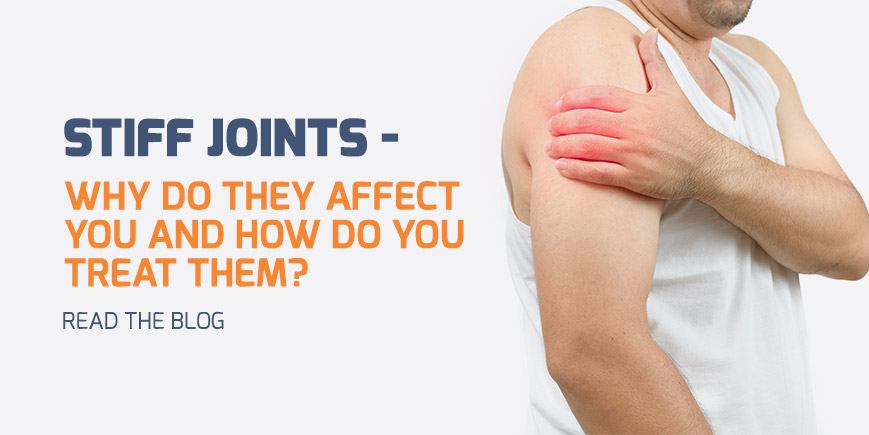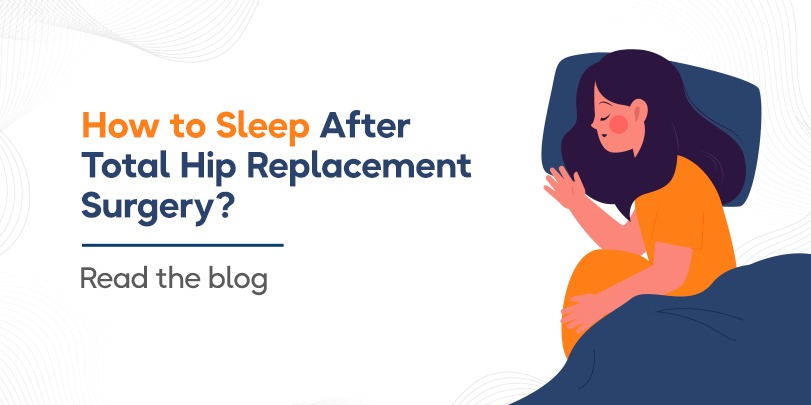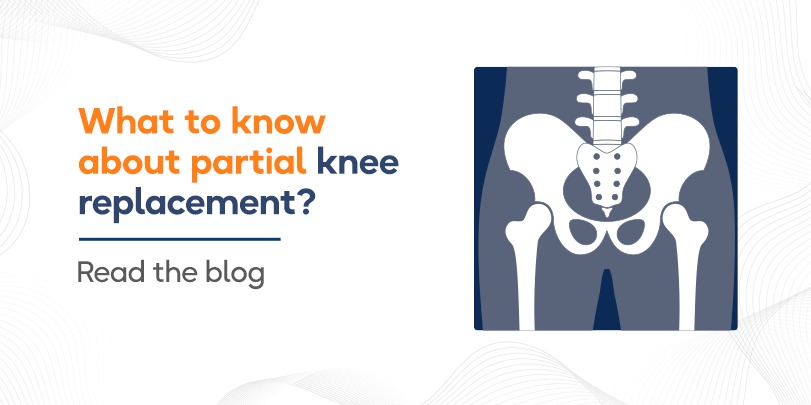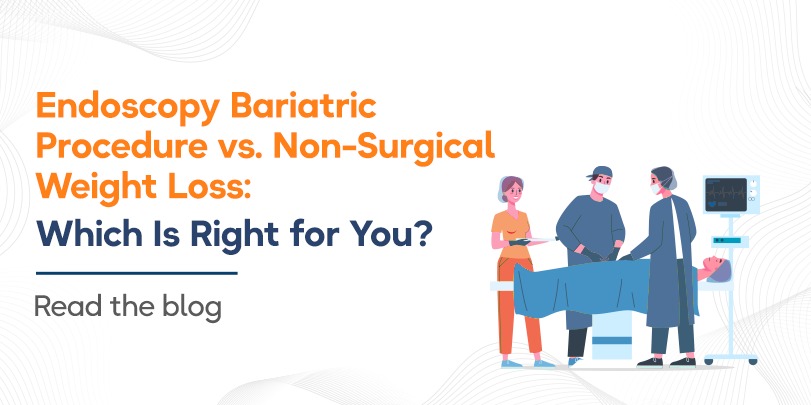Stiff Joints: Why Do They Affect You and How Do You Treat Them?
Joint pain is one of the aches that are common to everyone. Studies show that everyone will suffer from joint pain and stiffness at some point in their life. Joint pain commonly occurs in the hands, feet, hips, knees, or spine. There can be many types of joint pain like then stiffening, aching, swelling or feeling sore. Moreover, these pains may be chronic or temporary. In both cases, it may be constant or can fade in and out or come out of nowhere and be felt sharply and then dissipate.
The first step to solving this problem is to take a look at it.
Understanding Joint Pain
Joint Pain can come in a variety of shapes, sizes and forms and can be different for different people. The most common types of joint pains can affect a multitude of individuals such as some who:
- Has sustained an injury
- Repeatedly overuse a muscle group
- Repeatedly underuse a muscle group
- Have arthritis
- Suffer from mental illnesses like depression, anxiety or stress
- Suffer from obesity or other weight issues
- Have poor health
- Are older than 35
That said, let us get into some kinds of joint pains.
Stiff joints: causes
Some of the most common causes of joint pain and stiffness that occurs chronically include:
- Osteoarthritis
It happens as the protective cartilage that supports the ends of the bones deteriorates over a period. While osteoarthritis may affect any joint, it most usually affects the hands, knees, hips, and spine.
- Rheumatoid arthritis
Rheumatoid arthritis, or RA, is an autoimmune and inflammatory disease in which your immune system mistakenly assaults healthy cells in your body, producing inflammation (painful swelling) in the afflicted areas. RA primarily affects the joints, often attacking multiple joints at once. The hands, wrists, and knees are the most typically affected joints by RA. The lining of the joint becomes inflamed in RA joints, causing joint tissue destruction. This tissue damage can result in persistent or long-term discomfort, unsteadiness (loss of balance), and deformity (misshapenness). RA can also affect other tissues and organs, including the lungs, heart, and eyes.
- Gout
Gout is a frequent and complicated kind of arthritis that can afflict anyone at any age. It is distinguished by abrupt, acute episodes of pain, swelling, redness, and tenderness in one or more joints, most often the big toe. Gout attacks can be severe, waking you up in the middle of the night with the sensation that your big toe is on fire. The injured joint is heated, swollen, and so sensitive that even the weight of the bedsheet may feel unbearable. Gout symptoms might come and go, but there are strategies to control them and avoid flare-ups.
- Bursitis
Bursitis is a painful disorder that affects the bursae (bur-SEE), which are tiny, fluid-filled sacs that cushion the bones, tendons, and muscles around your joints. Bursitis develops when the bursae become inflamed. Bursitis is most commonly found in the shoulder, elbow, and hip. Bursitis can also affect your knee, heel, and the base of your big toe. Bursitis is frequently found around joints that undergo regular repetitive action.
- Viral infections
Infections can often lead to the joints being severely affected, especially if it is highly inflamed, swollen or bruised.
- Rashes
Rashes usually are a reaction to foreign matter that the body did not accept. It could lead to you breaking out in hives and is indicative of an oncoming allergic reaction. They can occur anywhere and may be due to clothes, environment, skin contact or even food.
- High fever
The body runs a high fever when it detects dangerous elements but sometimes it can also cause joints to ache more and fatigue can make the situation all the more painful.
- Injuries
Any injury to the joint can cause permanent or temporary problems. Broken bones and sprains are the leading cause of joint pain and stiffness today and can happen at any age to any gender.
- Tendinitis
Tendinitis is an inflammation or irritation of a tendon, which is one of the thick fibrous cords that connect muscle to bone. Pain and tenderness are felt right outside a joint as a result of the disorder. Tendinitis can affect any of your tendons, although it is most frequent in your shoulders, elbows, wrists, knees, and heels.
- Ageing
As in all other things, ageing brings about wear and tear with time which leads to joint pain and stiffness as the tissues of cartilage and bones suffer damage.
Now that we understand the causes, let us move on to the solutions.
How to Relieve Joint Stiffness
There are several remedies for joint pain and stiffness, depending on how bad the pain is or how severe the damage is. Joint pain and stiffness treatment can take just as many forms are the problems including:
- Home remedies
Home remedies are often quick, and simple and they work wonders as joint stiffness treatment. Some home remedies we would recommend that you try include:
- Heating pads or hot water bottles
- Ice packs
- Soaking in a warm bath
- Applying heating oils like ginger oil, eucalyptus oil, yarrow oil, arnica oil and lemongrass oil
- Getting a massage
- Excercise
When joints are not exercised, they start to lose function. Regularly exercising all your joints will cause them to be much healthier and last much longer. Ensure that you don’t overdo it because that is bad too. Consult our experts to solve any question you may have about what the right amount of exercise is for you. Both joint and muscle pain can be avoided with good exercise, so this is a good joint stiffness treatment.
- Weight Loss
Usually, obesity or being overweight is the cause for joints to deteriorate because of the extra weight. In such cases, losing that extra weight is good for the joint because it does not have to work harder to accomplish the same task ad it causes lesser wear on the joint. Joint and muscle pain become less with weight loss.
- Acetaminophen, (Tylenol®) or anti-inflammatory drugs (ibuprofen)
Over-the-counter painkillers are usually strong enough to work. However, if you have a medical history of stomach ulcers, kidney disease, or liver disease, please ask a physician if this is a good option for you.
- Ointments and gels
Many ointments and gels available over the counter like Iodex and Move- are good at their job. They will help relieve a lot of the pain in a short time. Do not forget to massage the joint while applying it. These are especially good for joint and muscle pain.
- Dietary Supplements
Some supplements like glucosamine may help when added to your diet. However, you must ALWAYS consult a doctor before you start including it in the diet.
- Doctor’s prescriptions for joint stiffness treatment may include:
-
- Supportive aids like braces, cane, shoes etc
- Physical or Occupational Therapy,
- Antidepressants
- Steroids
- Painkillers
- Surgery
Finally, surgery. One of the more permanent joint stiffness treatments is surgery. You could go for Arthroscopy- a minimally invasive surgery- or Joint Replacement surgery. Our experts will be happy to investigate and find out which is the best option for you.
When to see your doctor
Thus it is clear that joint pain and stiffness all over the body have many facets and actors that make it difficult to categorise it into narrow fields. Home remedies are not bad, and sometimes they can be a good, unharmful option. Anything scientifically viable which has some medical standing is okay to try. It is, however, essential to keep in mind that while some of them can be categorised broadly, everyone’s body works differently and your pain may not be the same as others. Always consult a medical professional if joint pain and stiffness all over the body become worse, or increases or changes from how it used to be, especially if it is so bad that it impairs your ability to perform everyday tasks. There may be many underlying conditions that can be harmful in the long run.
Here are some symptoms that may indicate the need for a visit to the doctor:
- More swelling than normal, or that is different
- Stiff or enlarged joints
- Numbness
- Noisy joints- including, but not limited to, clicking, grinding or snapping sounds when moving the joint
- Pain while moving the joint
- Difficulty bending or straightening the joint
- Loss of motion
- A red and hot and swollen joint. This one can be especially concerning because it may indicate the beginning of an infection that should be treated as early as possible to ensure it does not spread anymore or cause further, possibly permanent damage.
Joint paint can be an incredibly difficult thing to live with. We at Radiance Hospitals understand how trying it can be, so we have experts trained in helping you go through this journey. This is your fight, but please remember that there are people out there who want to ensure that you are never fighting alone.
References:
https://my.clevelandclinic.org/health/symptoms/17752-joint-pain
Remedies:
https://www.jointhealthmagazine.com/home-remedies-for-arthritis.html
Oils:
https://www.healthline.com/health/fitness-exercise/essential-oils-for-sore-muscles#how-to-use












